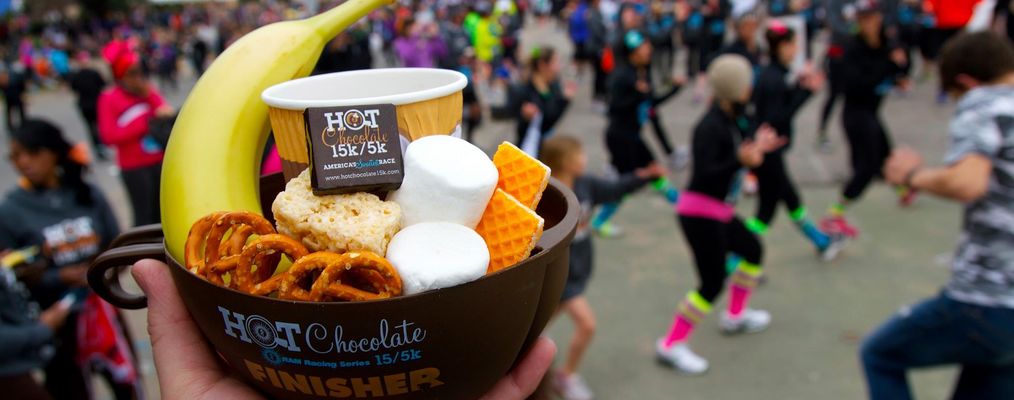5K Fundraisers for charity have a history dating back to 1969 and continue to grow in popularity thanks to large events such as the Susan G. Komen Race for the Cure, The Color Run, and Hot Chocolate 15k. These events typically center around raising awareness around diseases and raising money for cures and treatments. Some of these larger events have raised millions of dollars for their causes.
There is definitely an opportunity here, as evidence shows that athletic-style events are more lucrative than events that don’t challenge their participants. However, it always takes time to build up momentum for your annual 5K, so be patient and be prepared to not raise a ton of money the first time around. Keep your goals attainable so you can ensure success with small wins. If you’re new to 5K fundraisers, the major benefit will be raising awareness in your community – about a problem, and how your organization is solving that problem – and growing your donor prospects. It will be a great relationship-building tool as well. As your organization grows, these events can start to pay dividends down the road!
Historically, 5K-type events have been run by only the largest organizations. The staff and labor involved, and promotional costs made these types of fundraisers inaccessible to medium and small-budgeted nonprofits. Luckily, we’ve come a long way since 1969! Here are the key ways to help you automate and minimize the labor that goes into these events.
5K FundraisING PRO TIPS
1. GET SPECIFIC
The Cause – What are you fundraising for? It should be very specific! For example, “funding grants for childhood cancer research”
The Committee – Which team members will be working on making this come to life?
The Budget & Goals – How much do you need to raise and how much budget are you willing to allocate to this?
2. MAXIMIZE APPEAL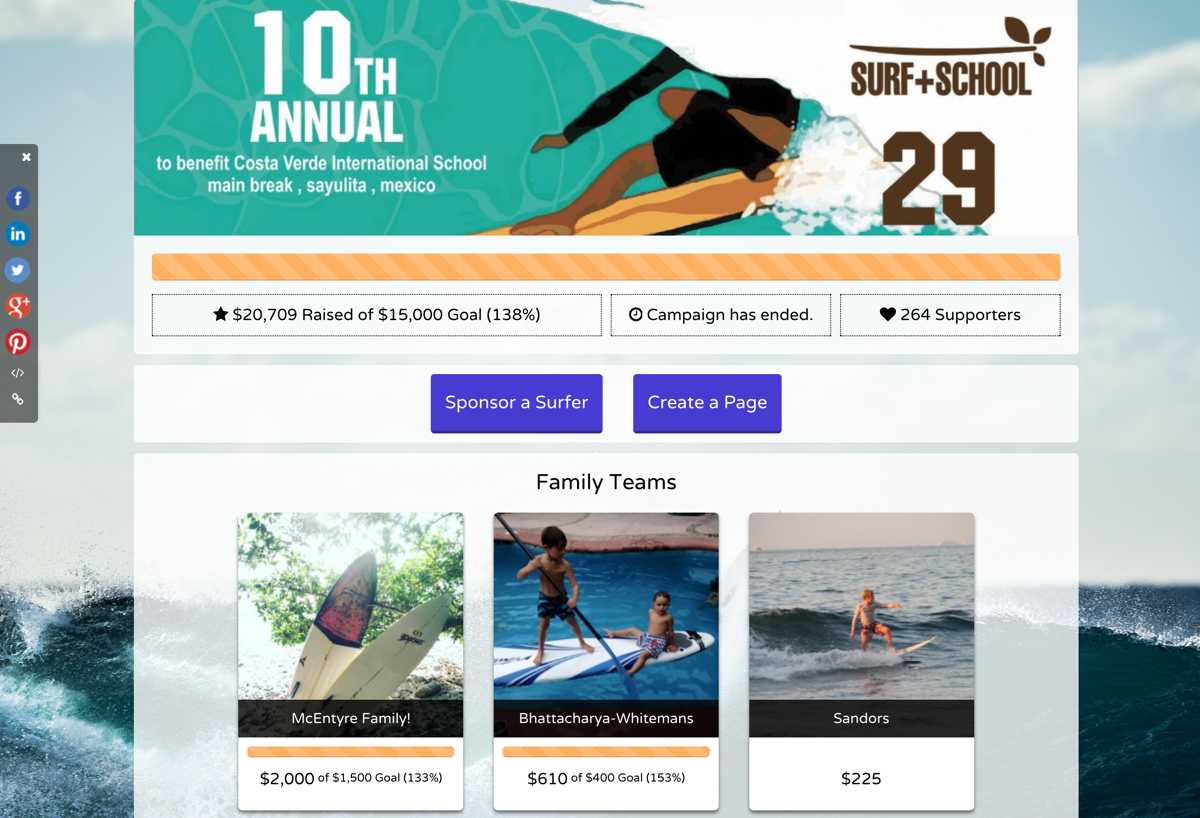
Activity
Is it a race, a fun run, a walk, a bike ride, a polar bear plunge, or something else? We’ve seen everything from virtual cruises to surf-a-thons – so feel free to get creative! Create a unique #hashtag to promote social media sharing. A unique hashtag is necessary – but not sufficient – to “going viral.”
Duration & Difficulty
Who are your core constituents? What are their ages and fitness levels? Once you pick your core activity type, you’ll want to offer alternative durations or difficulty for greater accessibility and appeal. For example, if you’re doing a 5K race, you can offer a 1-mile fun run or a 3K walk as well. Your event will hit the sweet spot if it can attract both athletes and non-athletes alike – some will come primarily for the athleticism of the run, and some primarily to support something close to their heart. The wider the appeal, the greater the success and opportunity for conversion.
Timing
Pick a season when the weather is pleasant (not too cold, not too hot, not too wet). Then, check for any similar and already scheduled events in your area – you’ll want to avoid competing for your supporter’s attention and energy.
Location
Pick a location that is near to where most of your supporters live and that will be convenient to access. Don’t forget to consider the ease of finding parking! When planning the course, take into consideration elevation changes to make it easier or more challenging.
3. DEDICATED EVENT PAGE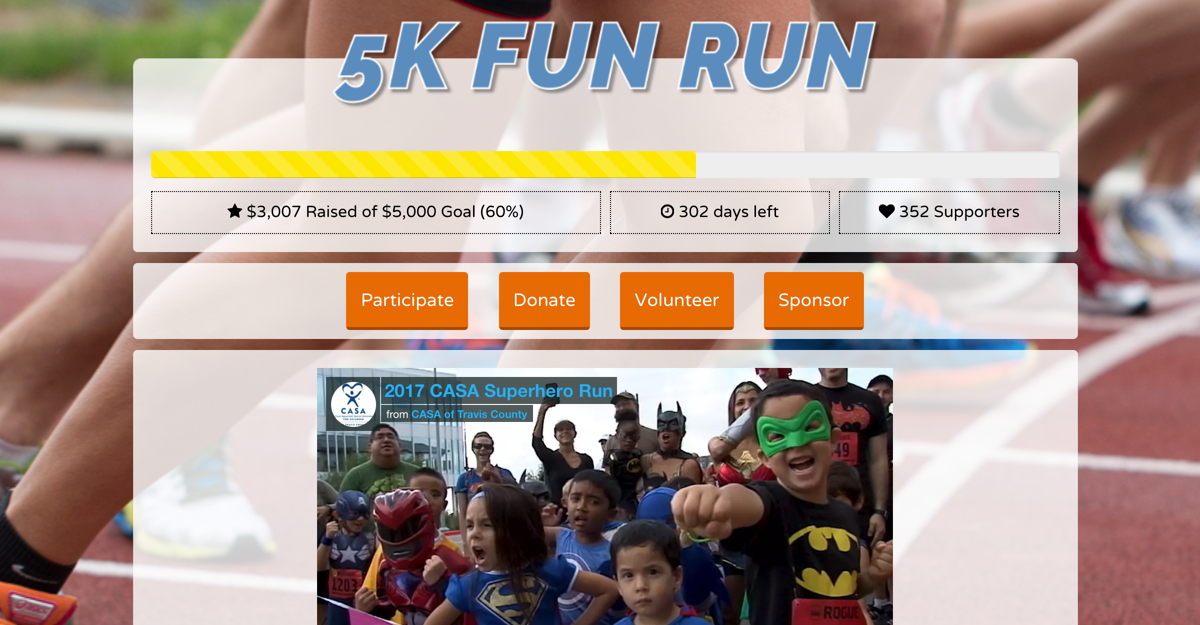
Your event will need its own landing page on the web. Make sure to include this information on your event page: What will the money raised be used for? You’ll need to have a very clear goal for the amount you’re looking to raise as well as what the funds will be used for. This is the big why for people to engage with this event. A great example is “100% of your donations will fund pediatric cancer research grants.”
The fundraising goal should also be clearly displayed and have a fundraising meter at the top that will update in real-time anyone makes a contribution, either to the campaign in general or to a specific fundraiser. Also, this page should have a list of all participants so their family and friends can easily find them and donate to them directly.
4. ONLINE REGISTRATION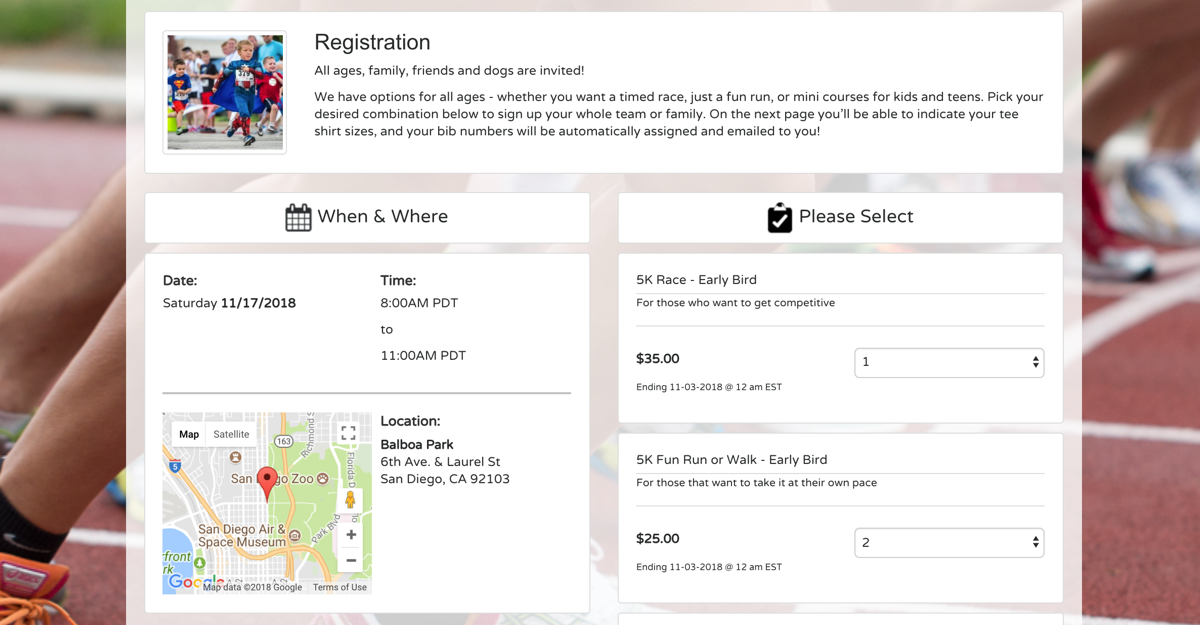
Open registration as early as a year ahead of time – and automate as much of the registration tasks as possible! Registration tasks include:
- List of multiple registration options (for example kids vs. adults, 5K Race vs. 1K Fun Run)
- Offer automatically-expiring early-bird pricing to promote early commitment
- Have everyone’s liability waivers signed
- Get t-shirt sizes or other information you need for the event
- Automated receipt and registration confirmation, that also serves as a tax receipt (if applicable)
- Offer discount codes
- Automatically assign bib numbers
A convenient online registration and fundraising process is going to be the key – your supporters need to be able to self-register and promote their fundraising pages easily. You’ll want a software for your event that allows you maximum automation, functionality, and flexibility to get the information you need from your registrants ahead of race day.
5. PERSONAL FUNDRAISING PAGES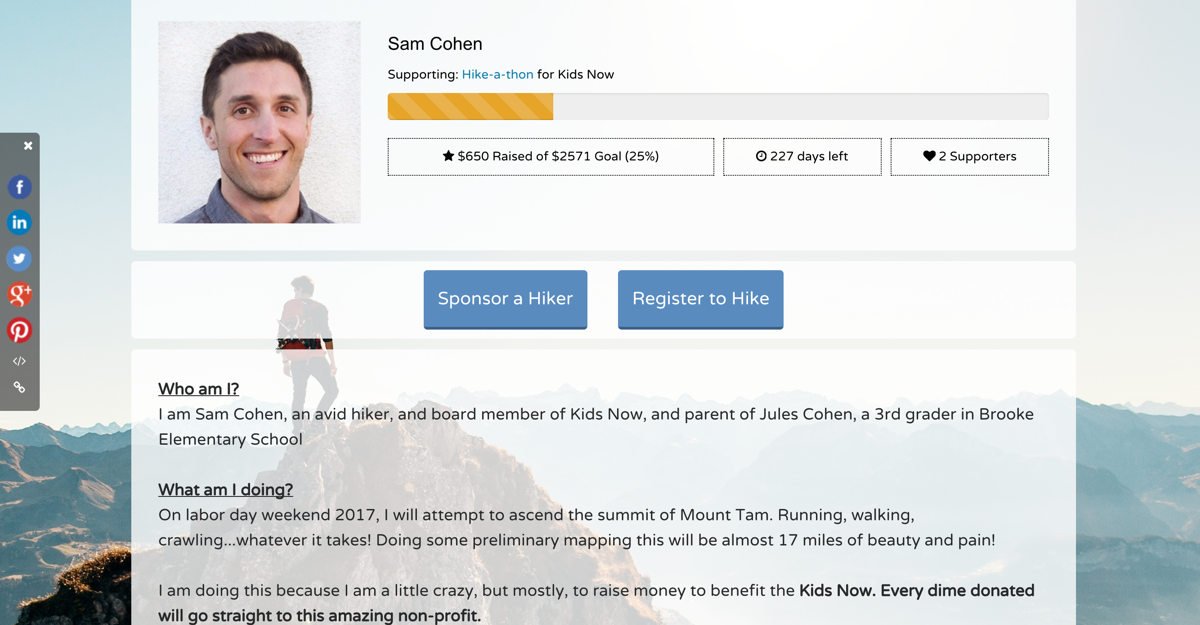
After signing up to participate, your supporters will need their own fundraising pages with personal goals and progress meters, and a way to fundraise as part of teams, and a way to create and customize their own pages. They’ll be able to share their personal fundraising campaign on their social media, and all donations that come to them will be allocated to their page on the front end, but effectively will go directly to your organization’s main campaign.
6. COVER YOUR COSTS
You can expect at least 50% of proceeds to go towards covering event costs. To offset that, you can do a couple of things:
GET SPONSORS
You could ask for event sponsorship in exchange for advertising at the event.
REGISTRATION FEES
You can also charge your participants a registration fee to cover overhead.
RECRUIT VOLUNTEERS
Another way to save is to recruit volunteers instead of hiring staff to help run the event day-of.
By using these tactics, you might be able to advertise that 100% of all donations will go towards the cause instead of overhead, which will be good to emphasize on that event landing page!
7. FREE ADVERTISING
Promote your event using your Google AdWords Grant, social media, and of course your email newsletter. (Design your own event graphics and promotional materials. You can get something beautiful together without the help of a designer using Canva and this list of free (or cheap) design resources.)
8. easy check-in
Day of, you can greatly save time by switching from paper lists to using your registration software’s mobile app for one-click check-ins.
Some things still haven’t changed since 1969, like setting up amenities and coordinating volunteers. But, by using these tips and an event platform that provides these tools will allow you to focus on making the event fun instead of the trenches of administrative work!

